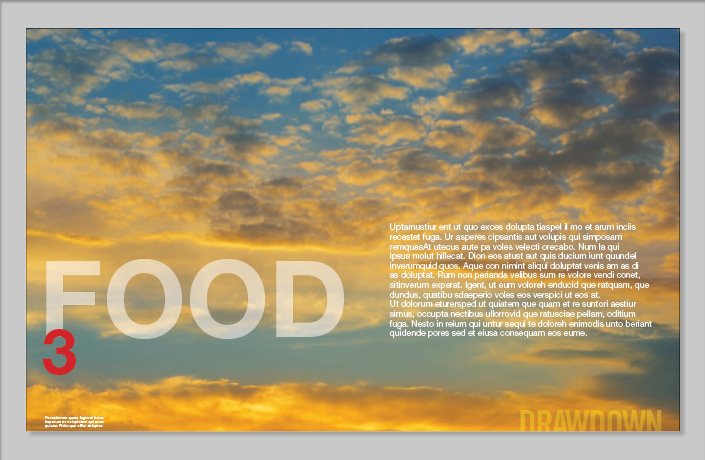
The sustainable living hub is funded by Unilever. “The idea is to really change the zeitgeist around climate change.” “We’re waging an incredible effort” to curb global warming, and it deserves a brighter spotlight, he said. They’ve seen the rapid growth in efficient building technology, LEDs and solar power. Hawken said that the crowd at Greenbuild understands the climate opportunity as well as leaders of any industry.

More important, he said, “We can elevate the quality of life and feeling of well-being.” View glass has been sold to office buildings, schools, hospitals and hotels.
#DRAWDOWN BOOK REVIEW SKIN#
“It’s a giant smart skin for the building.” Smart glass costs more than conventional glass, of course, but it reduces heating, cooling and lighting costs in a typical commercial building by 20%, he said. “Much like transition sunglasses, it adjusts the condition of the window glass based on location, angle of the sun, cloud cover, inside and outside temperature,” Mulpuri told me.

#DRAWDOWN BOOK REVIEW WINDOWS#
Rao Mulpuri is the chief executive of View, which makes dynamic, intelligent glass for windows – a potential climate solution. The project has a long list of prestigious partners and advisers.Ī number of companies, including Interface and Autodesk, have signed up to back Project Drawdown, either directly or through their foundations. Fewer people means fewer emissions and, of course, educating girls has incalculable other benefits.įor each technology, Project Drawdown will calculate upfront costs and savings over time, climate benefits and other advantages and obstacles, drawing from the best academic research. LED lights for homes and offices are ten times more efficient than incandescent bulbs, and increasingly affordable.Įducating girls is not ordinarily seen as a climate strategy, but a draft of the book notes that, with seven or more years of education, a girl in the developing world will marry four years later and have 2.2 fewer children. Ranchers can adopt rotational grazing, which stores carbon in soil. It aims to inspire as well as inform.Īs Amanda Ravenhill, the executive director of Project Drawdown put it: “We’re trying to say the solutions are everywhere – sometimes in surprising places.”īusinesses, for example, can invest in video conferencing technology to reduce travel. It made me pessimistic.”īy contrast, Project Drawdown will encompass a broader set of solutions and include those that can be carried out by individuals, communities, building owners, companies and local governments. It was, like, wow, does our fate rest in the hands of these boards of directors? It was not an empowering document. “They were almost all top down,” Hawken said, “and a lot of them could only be accomplished by big utilities and energy companies. The problem with the wedges, Hawken replied, is that their solutions tend to be technology-driven and some “are not practiced, affordable or running,” like capturing carbon from coal plants, which is expensive, or extracting hydrogen gas from coal.” At Greenbuild, which attracts 23,000 people, he’ll interview billionaire climate activist Tom Steyer and Maryland governor Martin O’Malley, key allies in the climate debate.īut as I asked Hawken: Don’t we know what to do about climate change? The climate wedges are, after all, alive and well at what is now the Carbon Mitigation Initiative at Princeton, where they’ve even been made into a board game. He has advised CEOs at Ford, Walmart and Interface, the carpet company. His books, The Ecology of Commerce and Natural Capitalism, the latter written with Amory Lovins and L Hunter Lovins, were among the first to point the way towards a sustainable global economy. Ordinarily, the announcement of a new book would not by itself be newsworthy, but Hawken has had so much influence over corporate sustainability in the US that his work merits attention. “This is a path to opportunity and wellbeing, as opposed to a tax or a loss.” “Drawdown is about technologies and solutions that are in place, understood, measured, documented and growing,” Hawken told me by phone. Its purpose is to re-frame the climate debate, by showing that solving the climate crisis will bring, not sacrifice, but “more security, more prosperity, more jobs, more well-being and better health,” Hawken said. Project Drawdown will begin as a lavishly illustrated book and online database, to be released late next year. “Stabilization at 450, 500, 550 ppm is chaos,” Hawken said.

Climate solutions abound, he said, and today, at the opening plenary of the big Greenbuild conference in New Orleans, he will unveil Project Drawdown – a new compendium of climate solutions that are designed not just to stabilize, but to reduce the greenhouse gases in the atmosphere. It is not, argues pioneering environmentalist, entrepreneur and author Paul Hawken.


 0 kommentar(er)
0 kommentar(er)
